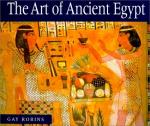|
This section contains 524 words (approx. 2 pages at 300 words per page) |

|
Raw Materials. The Egyptians exploited the Sinai Desert for raw materials, mining lead, tin, galena, some gold, and most important, turquoise. The first known turquoise jewelry was discovered in the tomb of Djer, second king of Dynasty 1 (circa 3000-2800 B.C.E.). Thus, Djer's reign probably marks the beginning of Egyptian Sinai expeditions.
Permanent Settlements. The bedouin native to this region impeded Egyptian exploitation of Sinai. Beginning with King Den (fourth king of Dynasty 1), royal inscriptions mentioned pacification of the Sinai Bedouin. In Dynasty 3 (circa 2675-2625 B.C.E.), inscriptions continued at the mines in Sinai but it was only in Dynasty 4 (circa 2625-2500 B.C.E.) that the Egyptians established a permanent settlement there. King Sneferu received much of the credit for inaugurating a long period of peace in the region and establishing permanent installations at the copper...
|
This section contains 524 words (approx. 2 pages at 300 words per page) |

|




